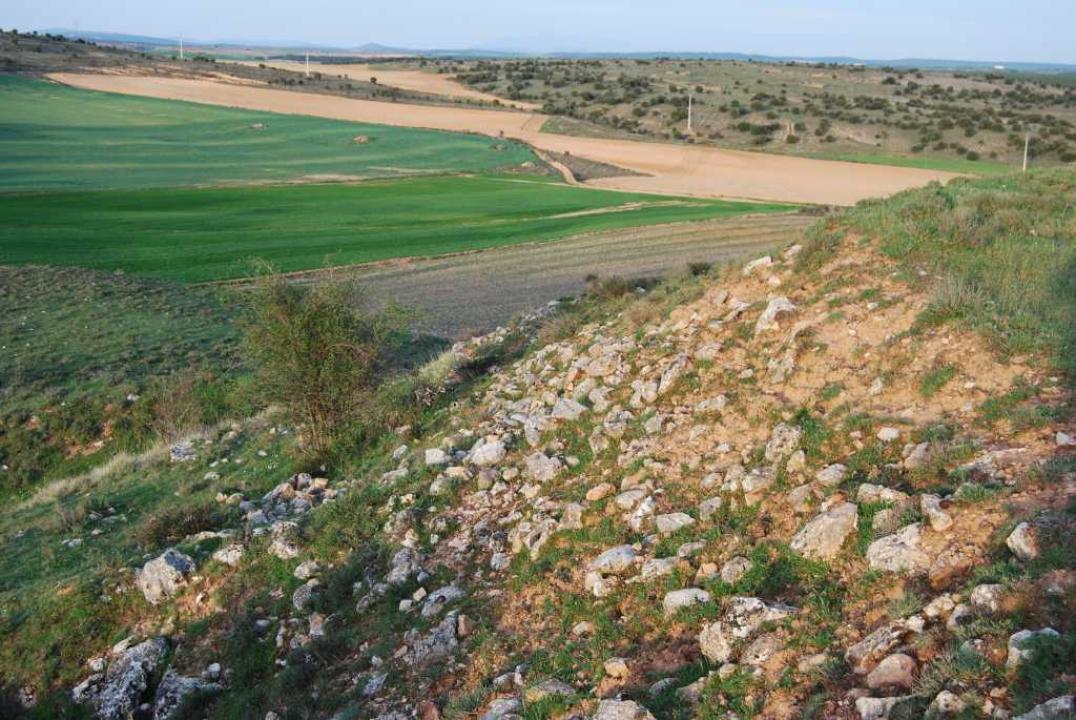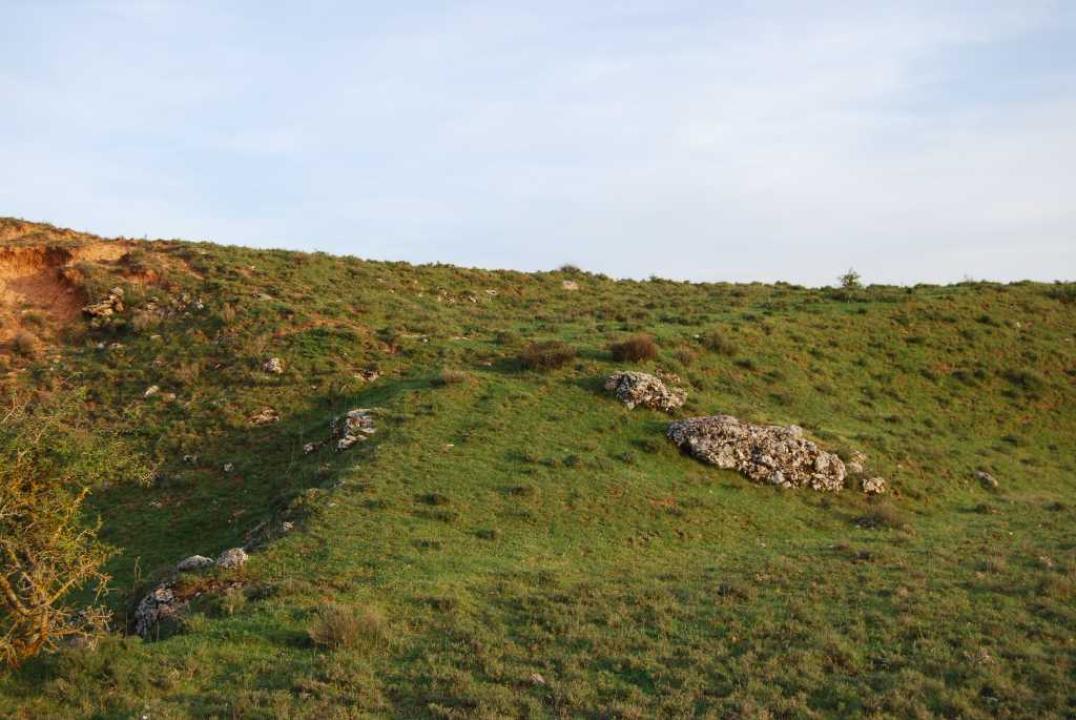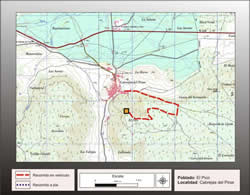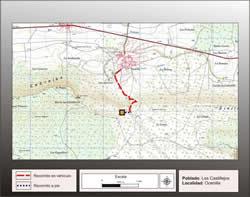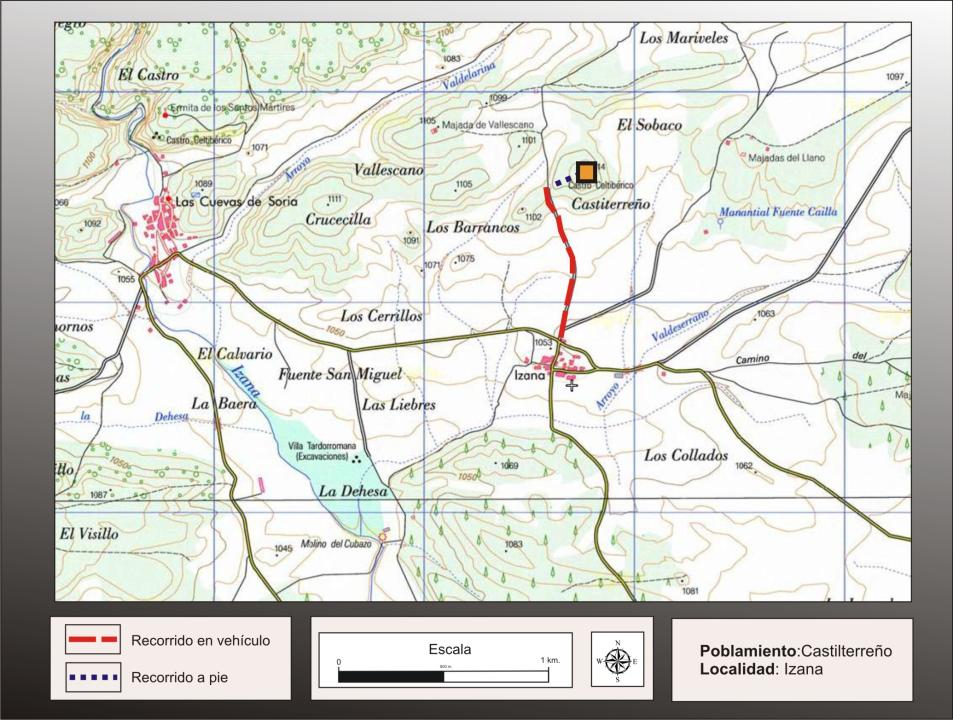

Getting there
This hill, located to the northwest, is separated about one kilometer from the village. You can reach the place from the road from Soria from and just before reaching the people have to take a path going left at the bottom of the reservoir.
Situation and location
Amesetado This hill is located 70m above the surrounding plain, its slopes have difficult access, making it easier in the West.
Research
Saavedra acknowledged this site when I was doing work on the Roman road number Antonine Itinerary XXVII (1861) and was excavated by Blas Taracena, in 1924, being subsequently revised by AC Pascual Diez (1991).
The village Celtiberian
He settled a large hill, measuring axis at the height of 180 and 160 meters, which represents an area of about 22,000 square meters.
The defensive system
The wall is quite removed today, according Taracena, who excavated the site, surrounded the entire top of the hill. It is constructed of stone slabs, ready to board found, and collected with mud, alternating with larger stones to strengthen, while retaining the northeast from 1.50 to 2.50 m high (as would be slightly higher Taracena )
On its eastern side the wall shows a double defense system which would be linked by a sort of trapezoidal tower (7 by 8.50 m). It is possible that the wall suffered a reconstruction of the two walls of the eastern and western part because they offer different from the rest.
The interior space and chronology
Rectangular houses were discovered, he cemented on natural mantle with stone base and Regrowth caught with mud walls with mud (probably basketed). Some of these homes have the typical underground room or cave, up to 2.50 m deep to store food as in other fields Celtiberian Numancia. In one of these homes found a home consisting of flat stones driven into the ground. These houses as Taracena were arranged around a block of 2.50 m wide, with very low and sidewalks paved with small stones.
The largest number of finds were pottery, suggesting that this town was a great center of pottery vessels for storage celtiberica large and dinner, consisting of bowls, stemware short, plates, cups, jugs lobed or circular pots, brackets and tubes decorated with figurative and geometric themes: birds, spirals, tetrasqueles, wavy lines, concentric circles, which keep similarity with those of Numancia. We also found abundant ceramic loom weights, most marked.
With a few decorative items such as brooches and some guns, metal tools were found which suggest that its inhabitants were the main resource exploitation of forests and the cultivation of cereals. Some currencies Celtiberian sign and date this lead Latin village in the II-I centuries BC
Contacts and schedule
It is not signposted and access is free.
Bibliography
- Taracena Aguirre, B. (1941): Archaeological Charter Spain. Soria, Madrid.
- Pascual Diez, A.C. (1991): Archaeological Charter Soria. Downtown. Diputacion Provincial de Soria, Soria.




